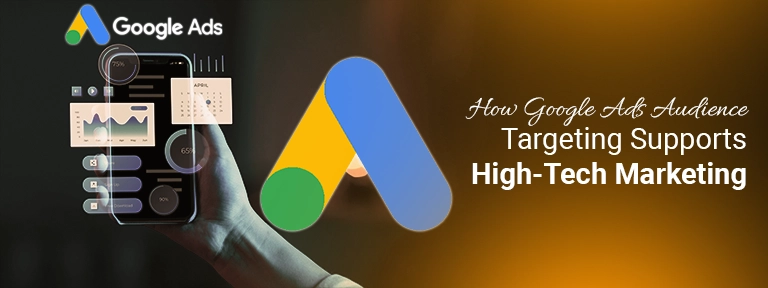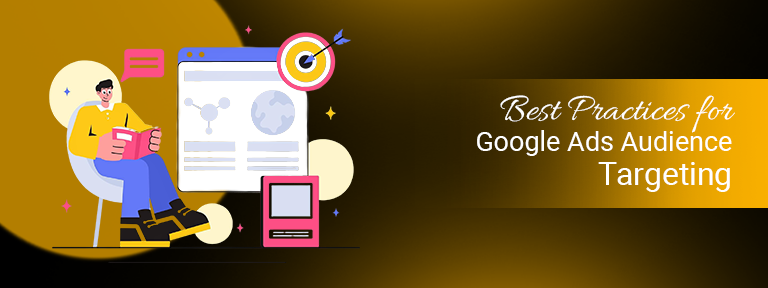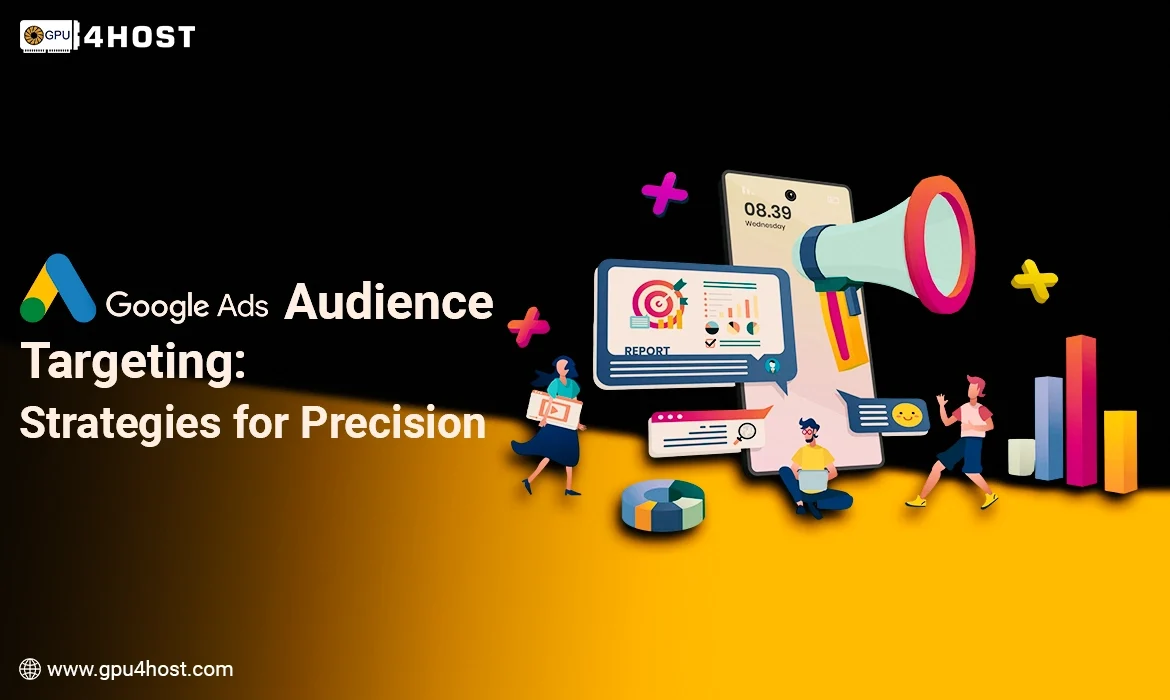Google Ads Audience Targeting
Google Ads Audience Targeting: Strategies for Precision
In the challenging digital advertising era, Google Ads audience targeting stands out as a robust tool that helps all businesses to link with the appropriate users at the best time. Even if you are promoting GPU-heavy services, such as GPU server hosting or AI image generator platforms, or providing SEO & SEM services, using the complete power of Google’s targeting proficiencies can unexpectedly improve your ROI.
This blog will check out the nuances of Google Ads Audience Targeting, its types, advantages, and how to align it with cutting-edge services like GPU cluster marketing, GPU hosting, and cutting-edge tech solutions.
What is Google Ads Audience Targeting?
Google Ads audience targeting helps all advertisers to reach a particular group of people based on who they are, their interests, habits, and what they are researching or planning. It helps to develop an accurate connection with your niche audience, guaranteeing that your ads are viewed by those most likely to convert into leads.
In some popular sectors, such as a GPU dedicated server or AI-powered applications, accurate targeting is a must. You don’t need to waste ad spend showing powerful infrastructure ads to users looking for general web hosting services. This is the case where Google’s audience section comes into play.
The Power of Google’s Audience Segments
1. Affinity Segments
These are users as per lifetime interests, such as gamers, tech experts, or enterprise-level IT decision-makers. For example, if you’re marketing GPU cluster solutions especially for machine learning, targeting technology and AI-powered affinity groups guarantees higher user engagement.
2. In-Market Segments
Users are eagerly searching for particular services or products. Targeting all those in the market for GPU server or GPU hosting can knowingly increase conversion power.
3. Custom Segments
With the help of Custom segments, advertisers described their target audience utilizing keywords, sites, or applications that their perfect customers utilize. This lets a tech service provider emphasize users who browse for “the best GPU dedicated server for ML” or “cloud server for AI image generator.”
4. Your Data Segments
These consist of remarketing lists and customer match audiences, engineered utilizing your previous data such as site visitors, application users, or email subscribers. If you are promoting Google Ads Audience Targeting courses or GPU tools, retargeting all site visitors who examine pricing pages can improve conversions.
5. Other Segments
This consists of demographic data, location-specific targeting, or device-based personalization. It’s ideal for dividing enterprise clients opting for SEO & SEM services or regional businesses looking for localized GPU infrastructure.
Google Remarketing & Enhanced Targeting
Google remarketing lets you link with all those users who’ve previously interacted with your brand. This is very important for various industries with long-term sales cycles, such as GPU hosting or AI image generator platforms. A user might go to your pricing page now and return in the future to buy—remarketing makes sure that you stay on top of the competition.
On the other side, enhanced targeting utilizes ML to discover users outside your specific set of audience who are likely to convert into leads. Google checks out your landing page, creative, and audience performance to offer smarter targeting. It’s mainly successful for new campaigns around different products, like a GPU dedicated server plan.
Aligning Audience Targeting with Bid Strategy & Shared Budgets
At the time of utilizing Google Ads audience targeting, adjusting it with the appropriate bid strategy guarantees maximum ROI. For highly determined segments, like in-market or personalized intent, utilizing automated bidding such as Target ROAS or maximizing conversions is generally perfect.
Shared budgets help you to improve ad spend across different campaigns. If you are running different advertisements for GPU hosting, GPU server, and AI image generator tools, utilizing shared budgets allows Google to distribute funds dynamically to leading ads.
Customer Segmentation Models: Improving Your Targeting Strategy
Knowing about and applying customer segmentation models is very important for audience targeting growth. Segment your target audience by:
- Behavioral Data: Track different actions like time spent on the website, pages visited, or downloads. Sponsor GPU clusters to users checking out deep learning content.
- Demographics: Personalize messaging for enterprise-level customers vs. developers.
- Technographics: Target users utilizing particular tech stacks or searching AI image generator tools.
How Google Ads Audience Targeting Supports High-Tech Marketing

- Niche Custom Segments
Describe your audience by what they are looking for—like “cloud GPU for deep learning”—to reach highly appropriate prospects.
- Utilizing Lookalike Audiences
Use your “Your data segments” to develop lookalikes, reaching all users a lot similar to your best clients—perfect for adjusting your GPU hosting solutions.
- Dynamic Remarketing
Upgrade particular products that users viewed in the past. If someone checks out a GPU cluster setup, show them improved or discounted plans.
- Cross-Platform Targeting
Reach every user across different platforms like Gmail, YouTube, Display Network, and Search. If you are selling both SEO & SEM services and GPU-based products, maintain brand transparency across many touchpoints.
Best Practices for Google Ads Audience Targeting

- Start Broad, Then Enhance: Start with huge affinity segments, then narrow down according to performance data.
- A/B Test Custom Segments: Test with numerous keyword-powered segments to get the best performers for GPU dedicated server solutions.
- Combine Segments: Utilize layered targeting for accuracy, for instance, in-market + high income + particular geolocation.
- Use Automation: Utilize Smart Bidding and improved targeting to help Google’s AI guide your ad placements.
Future Trends: Audience Targeting in a Cookieless World
As third-party cookies are discontinued, Google Ads audience targeting will depend more on first-party information, your data segments, and forecasted target audiences. This change makes customer information and segmentation even more important.
Investing in powerful CRM systems and adding them to Google Ads allows for richer customer segmentation models and more productive ad customization—mainly necessary for premium service offerings like a GPU dedicated server or AI model development tools.
Conclusion
Even if you are offering GPU hosting, marketing an AI image generator, or offering cutting-edge SEO & SEM services, learning Google Ads Audience Targeting is a must for improving your digital marketing growth. By knowing about the complete spectrum of audience kinds—custom segments, Google’s audience segments, your data segments, and other segments—you can develop tactics that engage, convert, and keep expensive customers.
With the perfect mixture of audience insights, shared budgets, bid strategy, and segmentation methods, Google Ads becomes an accurate engine for success in even the most challenging tech markets.
Let your advertising potential scale as productively as your GPU cluster — focused, quick, and developed to deliver.


